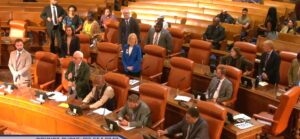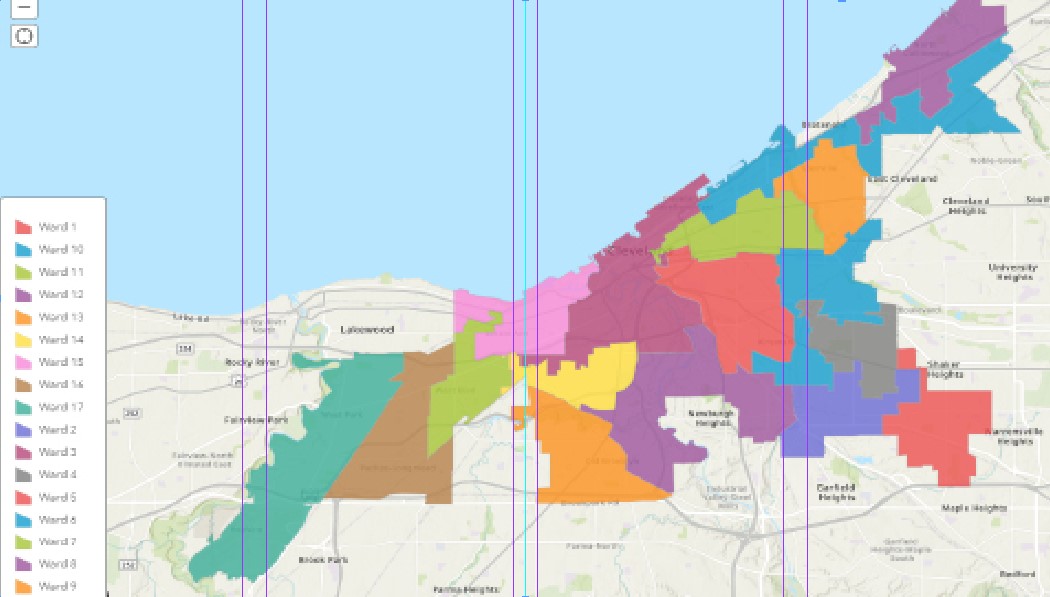Lisa O’Brien
The Cleveland Observer
The City of Cleveland’s ward map is set to be redrawn in less than three months, and you may only just be hearing about it now, so here is the rundown.
According to a 2008 amendment to the Cleveland city charter, the city’s number of wards must drop from 17 to 15 due to population loss recorded by the 2020 Census, meaning that two council seats will be eliminated.
In May, Cleveland City Council released a statement saying it had begun the process of redistricting by selecting Triad Research Group as its consulting team. In the statement, City Council President Blake A. Griffin said the council aims to complete the redistricting process by the end of 2024 and that Triad Research Group would spend the summer researching and drawing up the new map. Finally, Griffin gave an update at the first city council press conference of the session on Sept. 9.
What Is Their Plan?

During the city council’s press conference, Griffin outlined four main goals for the rest of the year, the last of which was the city redistricting project. Griffin explained that they should have a map “soon.” He reiterated that the council aims to have the map approved before the end of the year. Once the map is completed by the consulting team, the council plans to hold four meetings around the city for residents to view the map and provide feedback. Details of these meetings have not yet been released.
In the meantime, the council members urge residents to use Dave’s Redistricting App to see previous districting maps and to understand the type of work the council has ahead of it.
The Cleveland Observer took the liberty of exploring this resource and has determined that it seems more useful for viewing state-wide congressional and senate district lines than it is for focusing on the issue here in Cleveland. As the council president said, you are welcome to try it for yourself.
Griffin shared that after hearing concerns about the redistricting, the council wants to prioritize “keeping neighborhoods intact, more condensed, more equitable in having access to schools, libraries, recreation centers, and other resources” and to use natural boundaries to create wards in a way that is “very transparent.”
How Does This Affect You?
As a whole, redistricting is very important as it determines which voters can vote for which representatives. Changing the lines can result in changes in voter demographics that favor one candidate over another. When this is done purposely by the political body running for office, it is known as the illegal process of gerrymandering.
Gerrymandering, a hot topic for Ohioans this election cycle, is on the ballot in the form of Issue 1. Issue 1, more popularly referred to as the “Citizens Not Politicians” amendment, proposes that redistricting be performed by a commission of everyday citizens from multiple parties and that current and former politicians or party officials should be banned from sitting on the commission. While Issue 1 refers to state and congressional redistricting, it raises the question of whether it is fair for a governing body, such as a city council, to have the power to redraw and vote on their own district lines.
The map will likely be completed and voted on around the same time Ohioans vote whether to end state-wide gerrymandering, making the timing of the city’s redistricting riveting.
The redistricting of Cleveland city wards determines not only the representation of residents in city government but also affects the level of funding a neighborhood may receive for various projects.
For example, during the 2013 redistricting, the East Side lost Ward 11 and had significant shifts in the boundaries of Wards 7,8, and 10. The West Side also saw the loss of Ward 19, though the boundary redrawing was made less contentious by Councilman Jay Westbrook retiring and giving up Ward 16. With the bulk of the 2020 population loss occurring on the East side, the question becomes whether this area will again take the brunt of the ward reductions.
What Answers Do We Still Need?
With such an important decision approaching, the rushed process and delayed updates of the new map seem questionable.
TCO plans to investigate how the city’s redistricting strategy actually serves the residents.
In the following months, we hope to provide updates on the city’s motivations for the short time frame, the potential impacts of the new map, and how residents can get involved.




